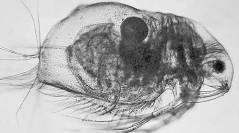

 European Journal of Taxonomy
821 (40) - Pages 40-56
European Journal of Taxonomy
821 (40) - Pages 40-56Acantholeberis smirnovi Paggi & Herrera-Martinez, 2020 (Cladocera: Acantholeberidae) was recently described from Andean habitats in South America. The presence of a population on the eastern coast of the continent brought the hypothesis of a new Neotropical species different from A. smirnovi. This hypothesis was confirmed from morphological, ecological and biogeographic evidence. Acantholeberis accolismaris Sousa, Elmoor-Loureiro & Álvarez-Silva sp. nov. differs from A. smirnovi in the morphology of the head, the valves and the limbs (especially the second and third limbs). Species of Acantholeberis are adapted to live in acid water bodies, with A. accolismaris sp. nov. presenting the same ecological requirements. However, the new species is adapted to live in temporary ponds near the Atlantic Ocean in Brazil in altitudes ranging between 4 and 15 meters above sea level. Considering that Acantholeberidae is an ancient taxon with a pre-Mesozoic origin, geological and environmental changes may have been relevant to speciation and to the observed biogeographic pattern of species of Acantholeberis in Neotropics.